Language:Japanese
In Kyoto, “Daitokuji natto,” a naturally fermented soybean that is said to have been introduced from China, is sold in front of the Daitokuji gate. Although it has the name natto, it looks “pitch black” and no matter how you look at it, you wouldn’t think it was delicious.
Even though I live in Kyoto, I had never eaten it before, so I asked the staff at the store, “Why should I try it?” And I was able to sample it.
The sample food was finely cut Daitokuji natto with chirimen sansho. I tried it, but it had a strange taste, similar to salty miso.
The aroma is the unique fermented smell of koji, and it has a salty taste. It has a unique flavor similar to miso and soy sauce, so depending on how you use it, it can add depth and richness to your dishes.
I bought one to try, and it’s quite expensive at 500 yen for 40g.
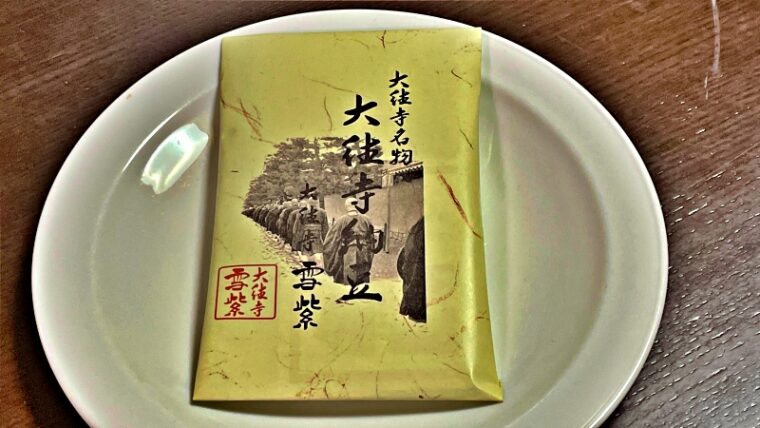
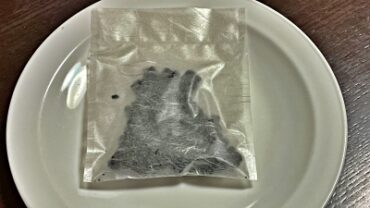
Inner bag
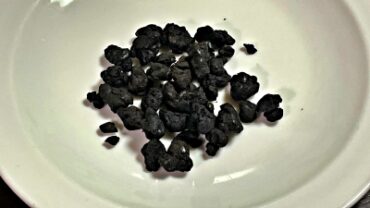
Capacity is 40g
When I asked the staff at the restaurant how to eat it deliciously, they showed me a flyer called “How To Eat?” that was probably made to explain how to eat it to tourists. She then told me, “I recommend the rice with egg.”
The title of the flyer I was shown was “How To EAT?”, but the explanation was all in Japanese.
I thought that I wouldn’t be able to convey this to overseas tourists, but it seems to be okay because I explain it in a fun and playful manner.
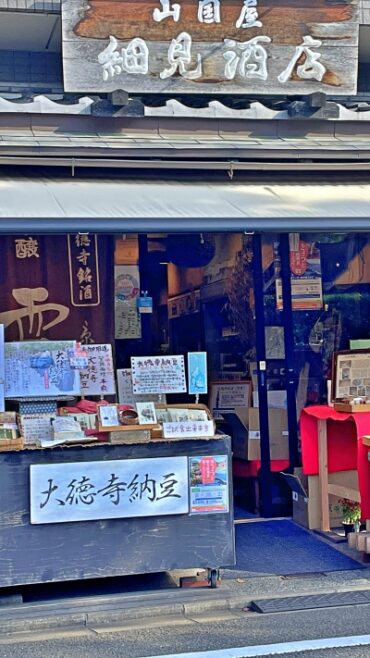
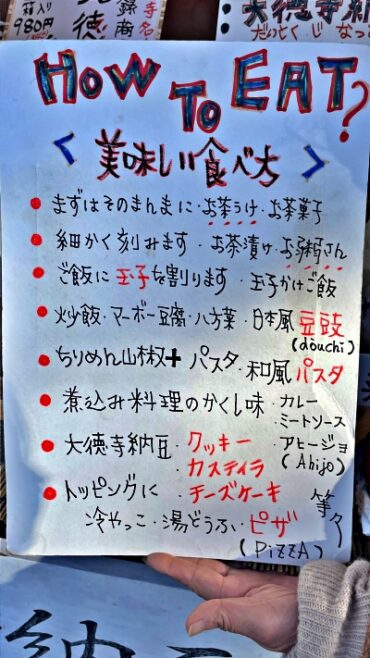
When I got home, I thought, “Okay, why would I eat it?” So I cut it into small pieces and ate it as is. Perhaps because I was able to eat it calmly, I felt that it had a deeper flavor than when I tried it. I put one grain on freshly cooked rice, took a bite, and then tried it as “Ochazuke”.
At first, I was a little put off by the fermented smell and black appearance, but if you eat a small amount with rice, you’ll get addicted to the rich miso and soy sauce flavor.
Daitokuji natto is full of antibiotics
Daitokuji natto is made by naturally fermenting and maturing koji mold, not natto bacteria, and takes 10 months to complete, including the final process of natural drying and sun-drying.
When Daitokuji natto, which was made through a process of natural fermentation and aging, was analyzed, it was found that it contained tens of times more antibiotics than the penicillin contained in blue mold.
Even in modern medicine, antibiotics (antibiotics, antibiotics) are used to treat bacterial infections, but these are chemically created drugs and have side effects.
On the other hand, Daitokuji natto is made with natural ingredients and no additives, and it can be said to be an antibiotic whose safety has been confirmed through clinical trials spanning over 1,000 years.
Considering these things, it might be a good idea to eat one Daitokuji natto a day, which is a superfood, for your health.
Antibiotics are used to treat infections caused by bacteria, and are not effective against viruses such as colds (influenza and coronavirus).
Origin of Daitokuji natto
Daitokuji natto is said to have been brought to Japan by Ganjin Wajo, who was born in China (Tang) during the Nara period, and was also introduced to Tenryuji and Myoshinji in Kyoto. In the past, it was also made in ordinary households.
It is said that Ikkyu Sojun (commonly known as Ikkyu-san) passed this on to Daitokuji Temple and left it behind.
Hamanatto, which was introduced around Lake Hamana in Shizuoka, is of the same type, and its origins can be traced back to the same place as touchi, which is still used in Chinese cuisine.
How to eat Daitokuji natto
When you buy Daitokuji natto, there is a bookmark for Daitokuji natto, a famous Daitokuji natto, inside the package, with instructions on how to store natto and how to eat natto.
According to it, it says, “Do not put it in the refrigerator, but store it in a sealed container at room temperature.”
The expiration date is 6 months after opening.
[How to eat natto] is as follows
- Tea snack and ochazuke
- For warm rice
- With cheese
- As a condiment for boiled tofu
- In rice balls for hiking and mountain climbing
- As a secret ingredient in Japanese and Western food
- As an accompaniment to Japanese sake
- For refreshing the palate of sweets
- As a secret ingredient in miso for miso soup and mapo tofu
I tried to eat it the way it was written, but I found the most delicious way to eat it was to put it on top of freshly cooked rice or to make it into ochazuke. The best way to eat it is to bite into it without putting the whole grain in your mouth. It also goes perfectly with Japanese sake, making it a great appetizer for alcohol lovers.
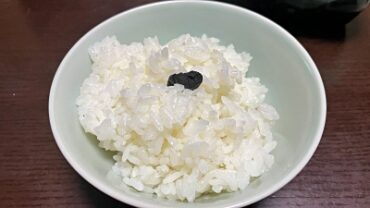
Freshly cooked rice
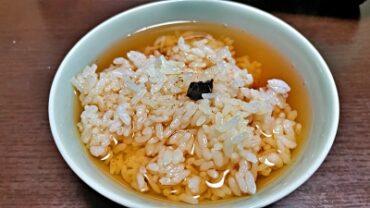
Ochazuke
In conclusions
Daitokuji natto looks black and has a unique fermented smell, but when you bite into it, it tastes like rich, high-grade red miso.
As written in the bookmark, using it as a secret ingredient in various dishes will add depth to the flavor. Also, if you serve it as an accompaniment to rice or alcohol, you will become addicted to it.
If you haven’t had it yet, why not try it once? I don’t know how to buy it overseas, but if you live in Japan, you can buy it here.➡”Daitokuji natto”
The shop we introduced this time is called Yamakuniya (Hosomi Liquor Store), located on the east side of Daitokuji Temple in Kyoto. The store sells “Kyoto local sake,” “Daitokuji natto,” and “Kyoto raw wheat gluten.”
36 Murasakino Shimomonzencho, Kita-ku, Kyoto-shi, Kyoto 603-8215
TEL:075-491-8743 FAX:075-491-8743
Business hours: 9:00-18:00 (closed on Sundays and holidays)

